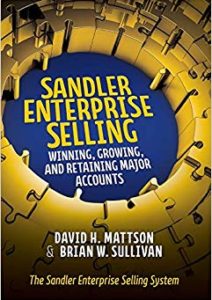Remember the days when sales managers routinely scolded sales reps for being in the office? The orders were “Get out of here and go see your prospects and clients!”, “Make something happen!” and “Go sell something!”. Of course, meeting with buyers in person is still very important. But the fact of the matter is that there are fewer opportunities to do it in our brave new world. And while sales reps may long for the good old days of “walking the halls”, research shows that buyers feel differently. Countless studies report the vast majority of buyers now prefer virtual interactions as opposed to face-to-face selling. And while that may have also been true in the days before 2020, mandatory distant selling brought on by the pandemic has tipped the scale to give us the dreaded new normal.
Truth be told, remote selling has been commonplace for years now especially with major accounts. Globalization and our just-in-time world have necessitated that we become effective at communication that doesn’t occur across a desk. But it’s clearly COVID that has made it a selling survival skill.
Of course, the challenges of virtual communication are many, especially in major account sales with selling and buying teams forced into messaging via screens filled with faces. Enterprise selling is complicated enough but distance now multiplies the complexities. The dependence on technology, the continual distractions and the lack of in-person visual cues are huge obstacles. At the end of the day, our connections are, in a word, disconnected.
There are many lists of good pointers to take into account to help us be more effective at virtual communication. Spend time with them and implement what you learn in your take-aways.
One of the most important points often overlooked in the emphasis on technology is the most vital element to help maximize the likelihood of effective virtual communication – pre-call planning. A topic, of course, that many in selling have a strong disdain for. While that’s not true of all sales reps, many still view more than cursory planning as a waste of time. “I got this…..I’m good!”.
That said, studies show pre-call planning greatly increases the chances of successful calls. Articles refer to the power of research, the criticality of clear goals and the importance of understanding the account’s pains, or lack thereof. Truthfully, that’s what Go/No-Go is all about. Executing on these basics fortifies your position in advance of any type of sales call. But in distance selling, the aforementioned complexities leave you much less room for error. In essence, you must be better.
And selling is, of course, a team sport. Especially with major accounts, where both the stakes and the stakeholders make team selling mandatory. Enterprise opportunities present unique problems beyond those faced in deals with small and medium-sized accounts. Long sales cycles, complex buyer networks, sophisticated competitors and large investments spent on pursuits are just a few of the challenges demanding that selling teams bring their very best. Especially from a distance.
In advance of virtual major account sales calls, comprehensive prep activities must happen. In enterprise selling, the stakes are higher and the focus must be more intense. And this magnified attention involves the entire selling team – sales, sales management, executive leadership, finance, marketing, legal and any other relevant functions connected to the account or the pursuit. In the adventure that is virtual communication, team selling means much more than “Everybody Sells”. It means “Everybody Communicates”.
With digital platforms, pre-call planning for virtual team selling events is a no-brainer. Sharing agendas, account profiles and other insightful assets across e-platforms is mandatory. And the feedback loop must be active. Teammates can weigh in with valuable insights regarding all aspects of the upcoming call. Again, it’s a team sport. The selling lone wolf who builds call plans for virtual major account meetings without seeking input is, in a word, foolish. In significant pursuits, you can’t neglect any chance to strengthen your competitive advantage. And your teammates, as your collaborative assets, can be your competitive advantage. Remember that they are subject matter experts who can play active roles in the upcoming call, bringing their expertise to the screen and exposing the buying team to the depth and breadth of your organization’s capability. On the call, the buyers get a view of the value that you’ll bring to the partnership after the deal is won. Your teammates, by increasing your value to the account, absolutely increase your chances of winning.
With so much at stake, simply having your teammates follow their invites and show up for a scheduled call is a waste. “Winging it” is a strategy but a very foolish one. Buyers are smart. Your lack of preparation will be evident. And those sophisticated competitors I mentioned will come prepared. You’ll be done. Time for the post-mortem.
There’s a quote that captures the essence of pre-call planning for virtual events and it’s based in human relationships. “It’s not the distance that keeps people apart. It’s the lack of communication”. Let that sink in. And to overcome virtual selling’s unique challenges, take it to heart. Communicate clearly with your clients in your virtual meetings and do the same in your pre-call planning with your colleagues. In virtual major account selling, lone wolves lose. The winning strategy is always to hunt in packs!












Comments